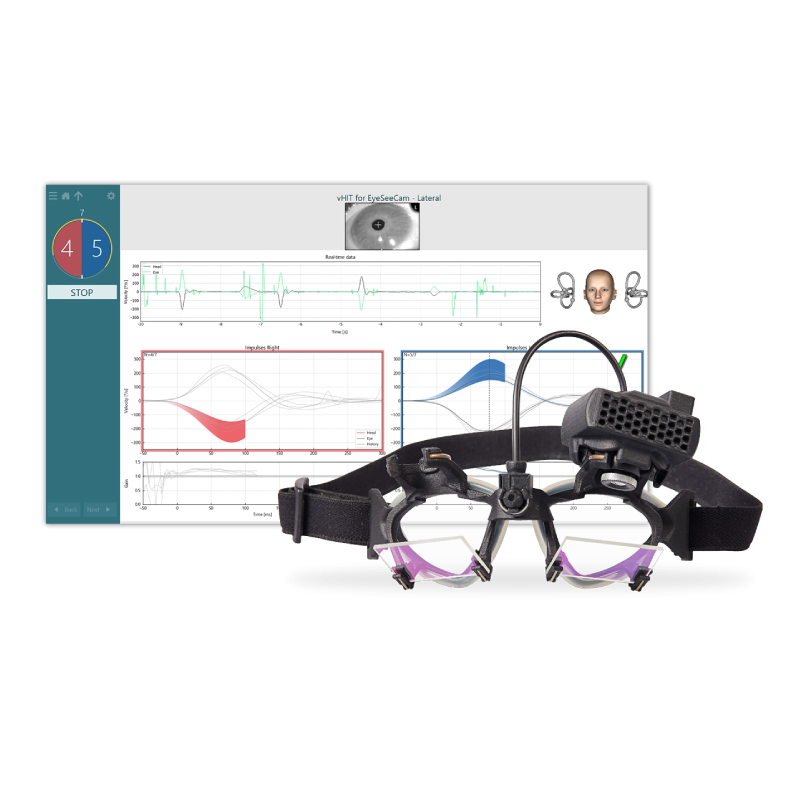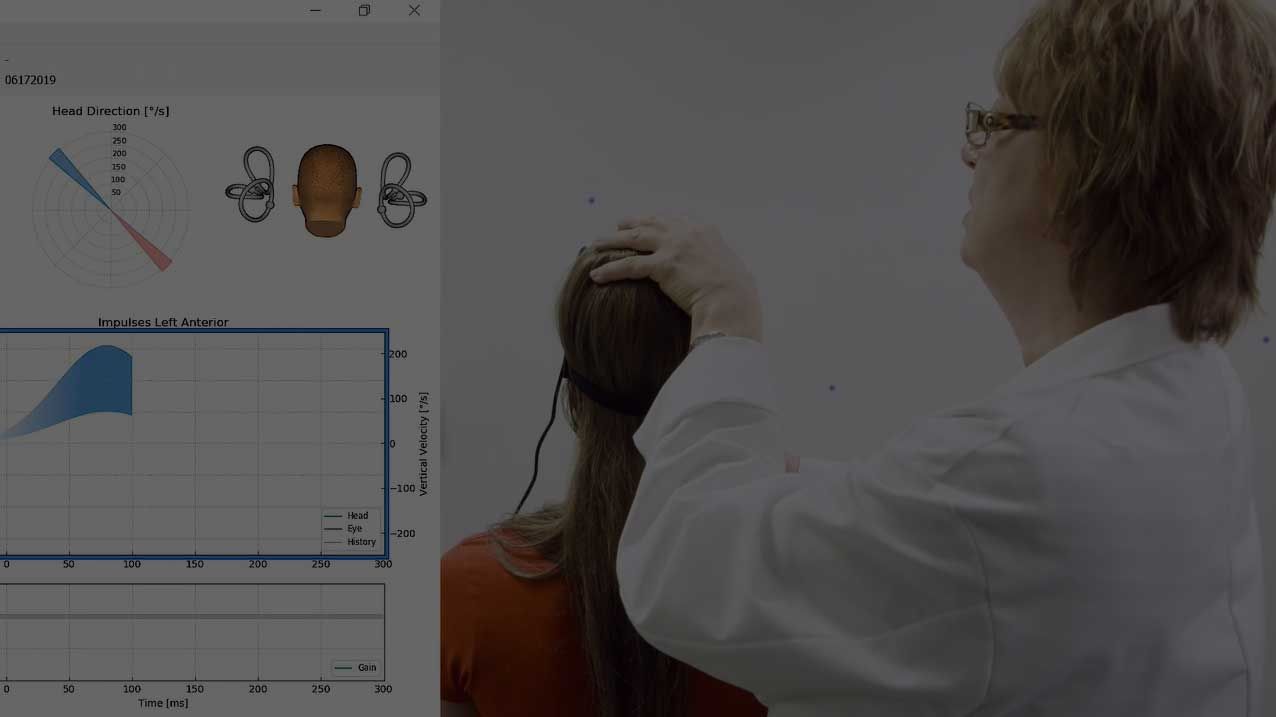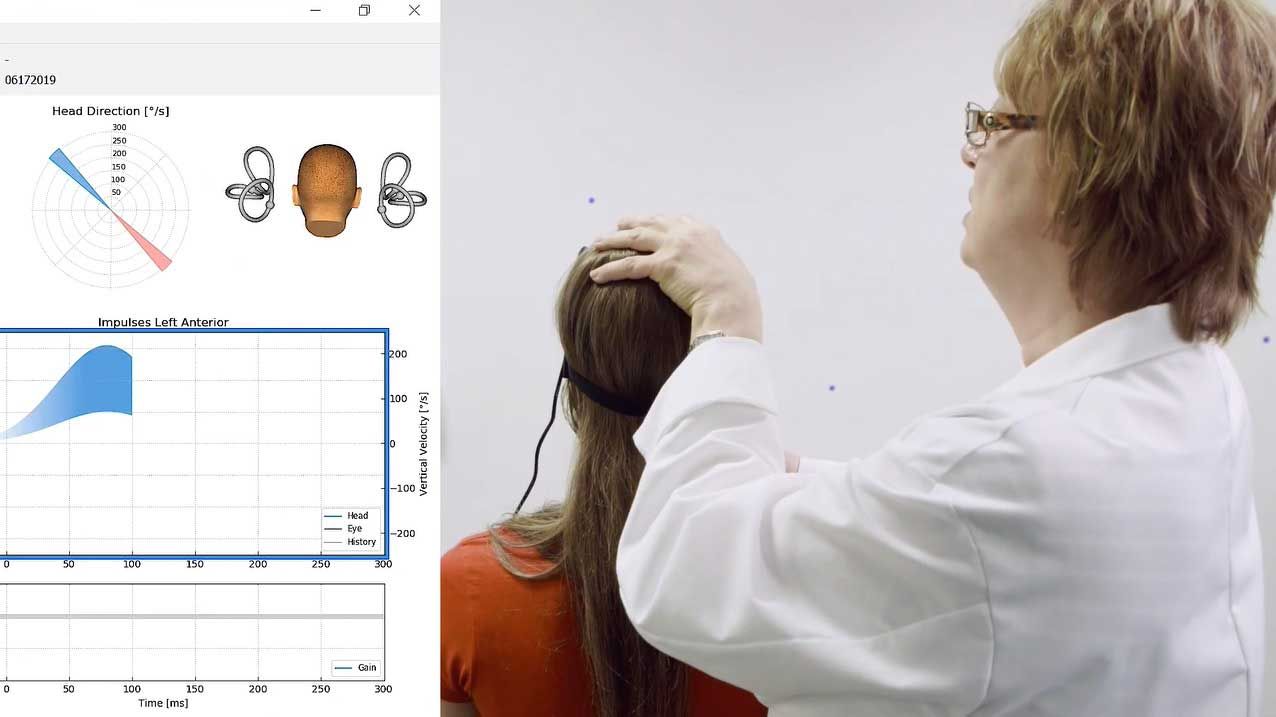

EyeSeeCam vHIT
testing made clinical
-
Test all six semicircular canals
-
Data export for clinical research
-
3D head model for objective feedback on the quality of head impulses
-
Real-time eye movements and head movements are displayed
Perform objective head impulses
EyeSeeCam vHIT features an easy guide to let you know when your head impulses are performed at the correct head velocity, which is 150-300 degrees per second. Feedback is given to indicate if your head impulses are in this range, visualized by a shaded area. Head impulses within the shaded area yield a 'ding' sound and a green check mark. Head impulses outside the shaded area yield a 'dong' sound and a red cross mark.
Benefits of the video head impulse test (vHIT)
Covert saccades are not visible without video head impulse test (vHIT) hardware and software. Thus, the traditional bedside or clinical head impulse test (cHIT) is only able to identify overt saccades. Covert saccades are abnormal eye movements that occur during the (video) head impulse test. EyeSeeCam vHIT is able to capture and measure these eye movements, eliminating the risk of false negatives.
A thorough assessment of semicircular-canal function
EyeSeeCam vHIT can be used to measure and display vestibular-ocular reflex (VOR) gains for all six semicircular canals. Vertical canals are tested by thrusting the patient’s head in the 45-degree planes while the patient continues to focus on the target in front of them. There are polar plots in the software to guide you and provide feedback to make sure you are thrusting in the correct planes.
3D head model for accurate testing
Head impulse test goggle
Superior eye and head tracking
User-friendly design
No shortage of clinical data
Gold-standard VOR gain measurements
Need support or training?
Check out the latest training material for EyeSeeCam vHIT.


